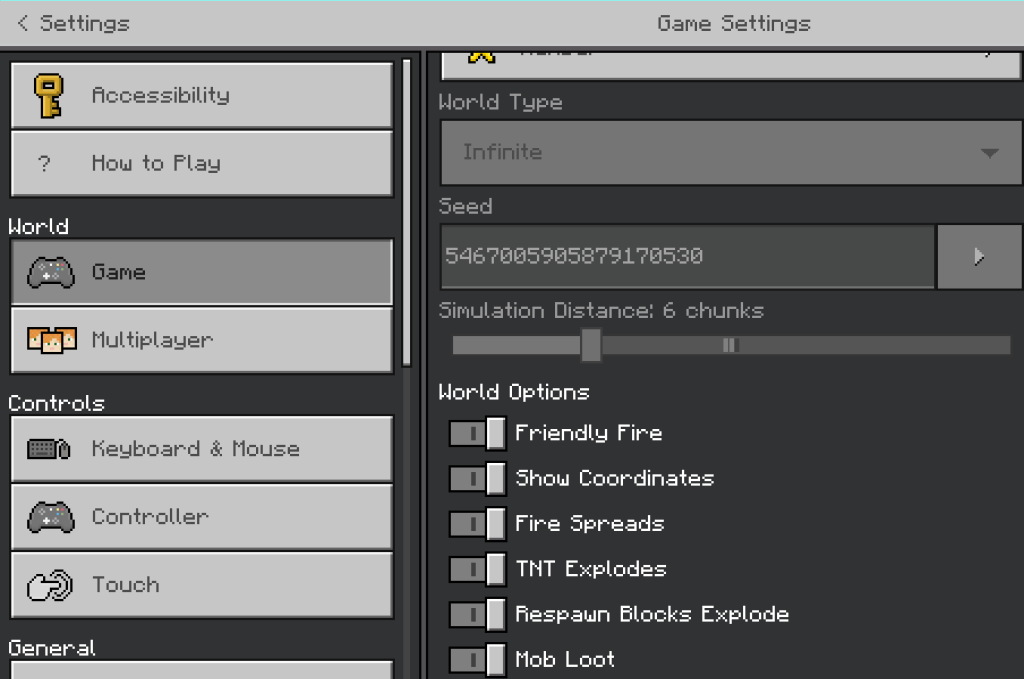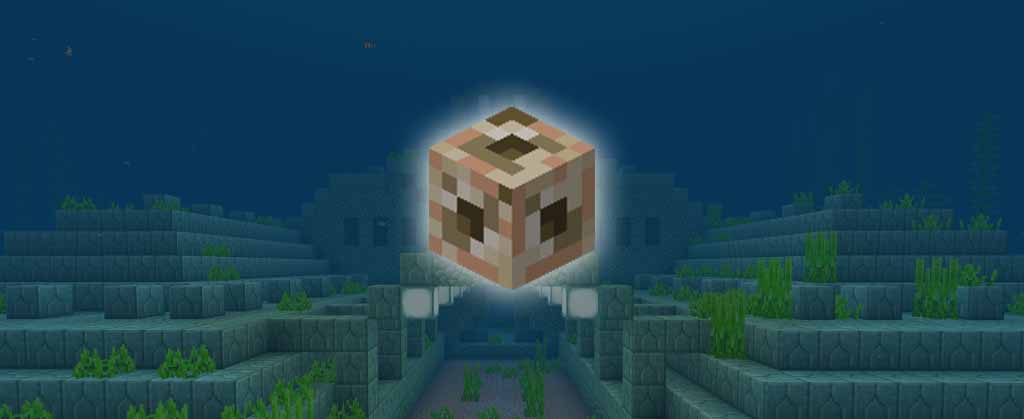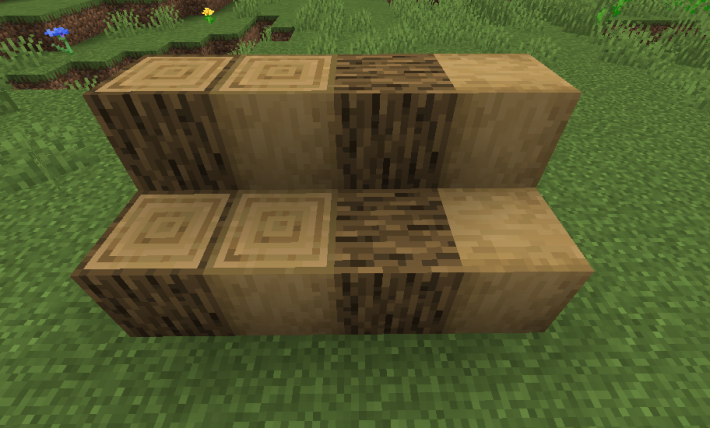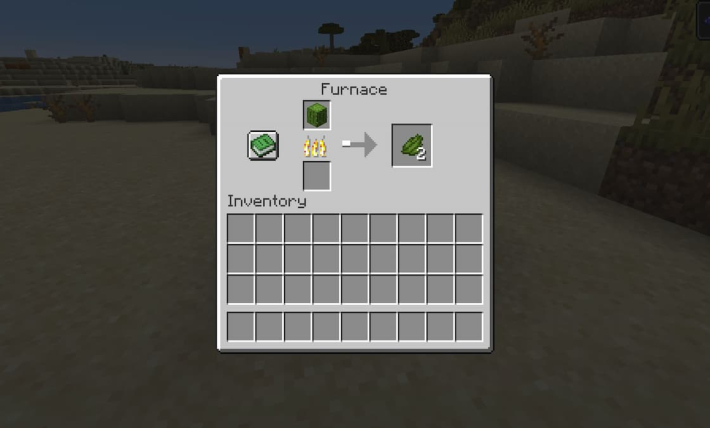Table of Contents
A Minecraft conduit acts like an underwater beacon, providing players with special effects once it has been built. It can be placed within any biome at any altitude as long as it is in a body of water that is at least 3x3x3 blocks. The water can be formed from water source blocks, flowing water, or even waterlogged blocks so long as it and the conduit are surrounded by a prismarine frame.
The prismarine frame activates the conduit in the middle of the frame. Once activated, it provides the player with conduit power.
What is Conduit Power?
Conduit Power is granted to the players within the conduit’s range as long as they meet one of two conditions: they must either be underwater, or they must be above water in rainy weather. If they leave the specified range or leave the water or rain, the power given to them will quickly disappear. Conduit power comes in the form of special effects applied to the players who meet these conditions.
Water Breathing
So long as the player is in range, they are able to breathe underwater freely. Additionally, if they leave the range and then return, their oxygen bubbles will be refilled.
Haste
Players will have an increased mining speed underwater, mining 16.7% faster than they would otherwise.
Night Vision
Players will be able to see in the dark more clearly. In addition to this ability, the conduit itself acts as a level 15 light source, which is equivalent to light sources like beacons, lanterns, and lava.
Attack Nearby Mobs
Any hostile mobs that come within eight blocks of the activated conduit, such as drowned, guardians, and elder guardians, are attacked by it until they either walk out of range or die.
All of these benefits make the conduit useful for a number of tasks, such as clearing out an ocean monument and exploring undersea caves.
Crafting the Conduit
In order to craft the conduit, players need to acquire one heart of the sea and eight nautilus shells. In the crafting table’s 3×3 grid, the heart of the sea is placed in the center of the grid, with the nautilus shells filling the other eight boxes.
Heart of the Sea
The only way to find the heart of the sea is by following a treasure map found on a sunken ship.
After finding a sunken ship and taking the buried treasure map, follow it to the red “X”. Dig around to find the buried treasure. Every buried treasure chest contains one heart of the sea.
If you’re struggling to find a sunken shipwreck, you can potentially find one by feeding a dolphin. After giving a dolphin raw cod or raw salmon, they will start leading you toward the nearest underwater structure, whether it is a sunken ship, a piece of buried treasure, or underwater ruins.
Nautilus Shells
There are three ways to obtain nautilus shells in Minecraft.
Killing Drowned
The most convenient way to obtain nautilus shells is through killing drowned. In Java edition, drowned have a 3% chance of dropping a nautilus shell after death. In Bedrock edition this chance is slightly higher at 8%. This method is the cheapest and most convenient of the three.
Fishing
If fighting drowned doesn’t sound appealing, nautilus shells can also be caught with a fishing rod. With a normal, unenchanted fishing rod, players have a 0.8% chance of catching a nautilus shell. Enchanting a fishing rod with the Luck of the Sea enchantment increases this slightly, with the highest version of the enchantment giving players a 1.9% chance of catching a nautilus shell.
Trading
The only other way to get a nautilus shell is by trading with a wandering trader. They typically sell them for five emeralds each, but they will only sell 5 at a time.
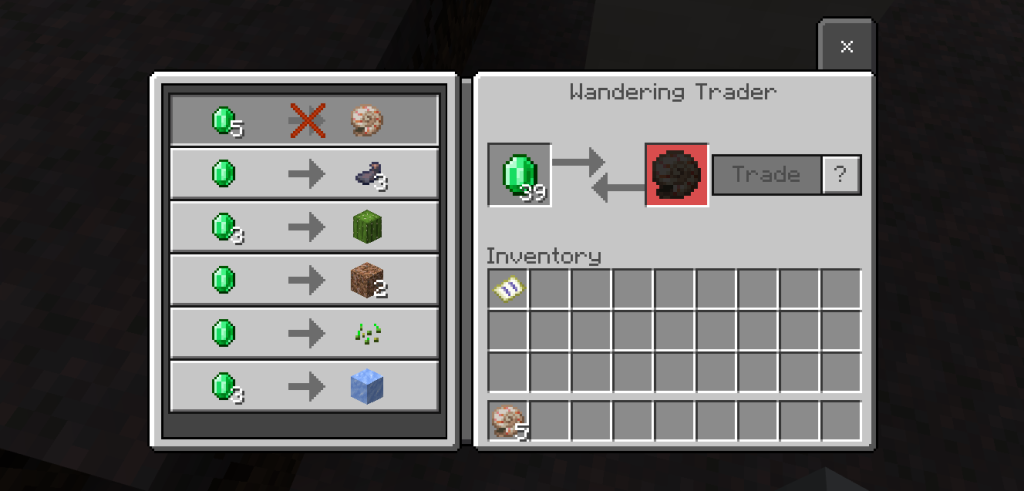
Making the Prismarine Frame
In order to activate a conduit, it must be surrounded by a frame of between 16 and 42 prismarine blocks. The blocks that the frame can be made of are sea lanterns, prismarine blocks, dark prismarine, and prismarine bricks. They must be full blocks, as using slabs or stairs will not activate your conduit.
Gathering Frame Materials
The blocks necessary for crafting the frame can be found in two places.
Firstly, they can be gathered from ocean ruins and smaller underwater structures made of prismarine. This method is safer than venturing into an ocean monument, but it takes longer to gather enough blocks to fully power a conduit.
Looting an ocean monument will give players all of the necessary materials much faster. However, players must be prepared to fight off guardians and the temple’s three elder guardians, whose abilities include decreasing the player’s attack speed by 30%. They also decrease mining speed, making it much harder to loot the ocean monuments without defeating them.
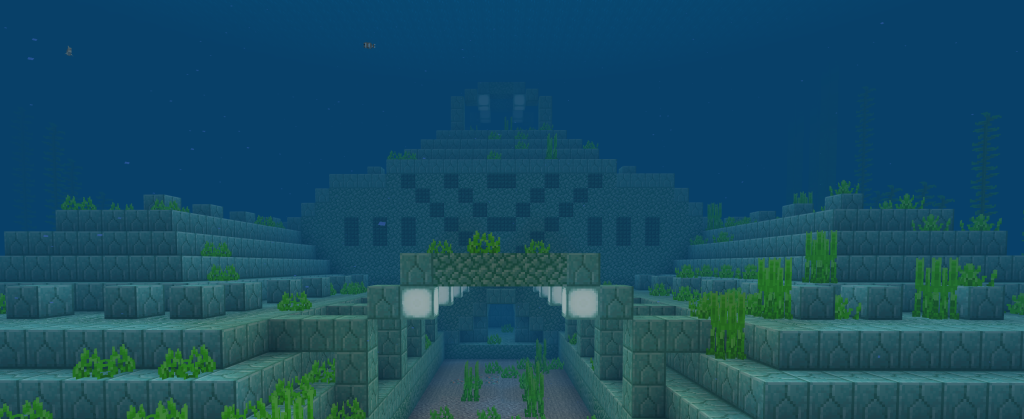
Putting the Basic Frame Together
Once you have at least 16 of the required blocks, you can start building the activation frame. The frame must be built in a 5x5x5 structure. Any of the required blocks can be used in any order as long as the number of blocks and shape is correct.
If building with 16 blocks, the frame should be built in a 5×5 frame, similar in shape to a nether portal.
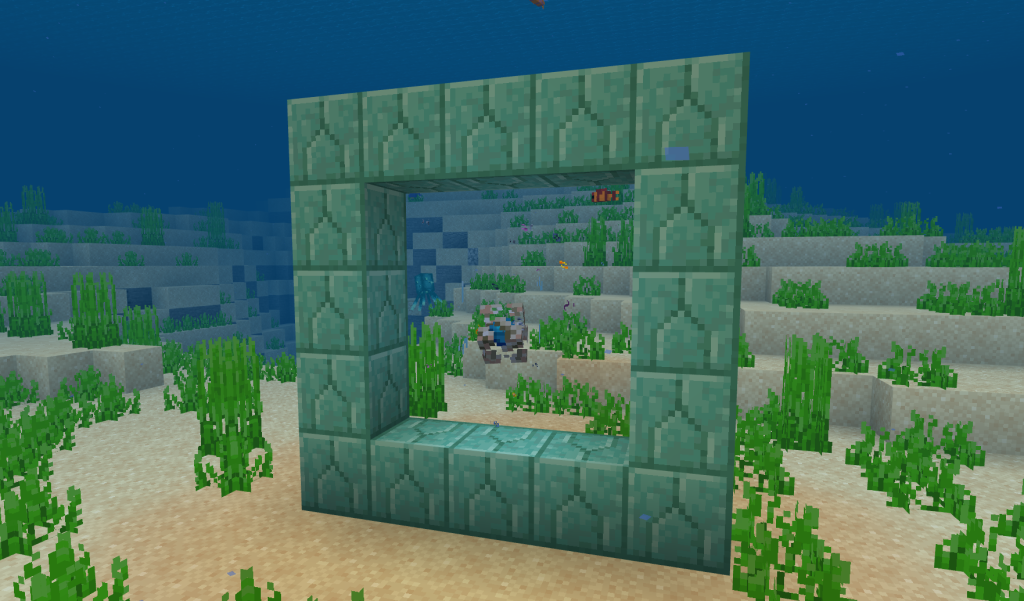
If any block is missing, the conduit will remain inactive. If a block is mined away, the conduit will deactivate until it is replaced.
You can tell if a conduit is deactivated because the core block will float unmoving in the center, as shown below, rather than expanding and visibly showing the heart of the sea like in the image above. Additionally, an activated conduit will have a heart-beat noise coming from it; a deactivated one will not.
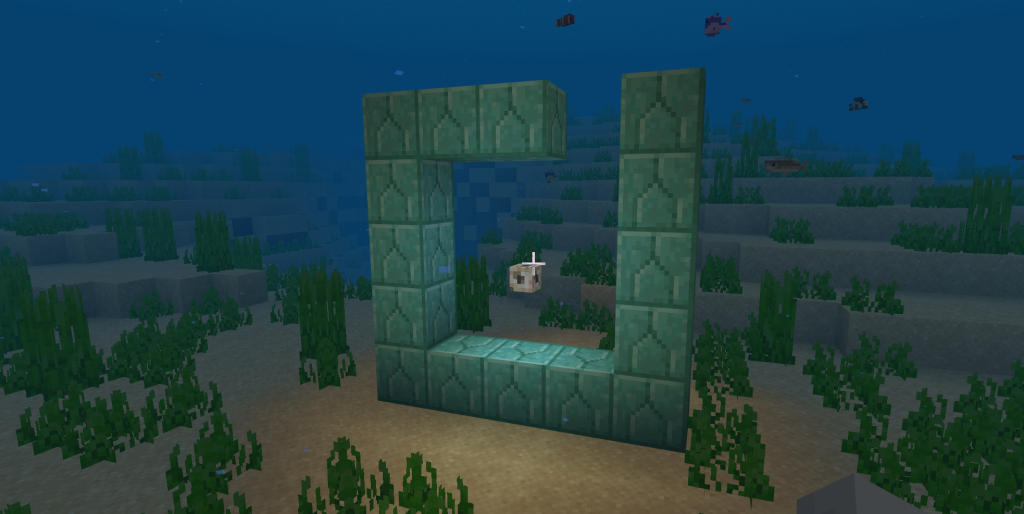
In the basic, 16-block formation, the conduit will provide the player with conduit power in a range of 32 blocks. In order to extend the range of the conduit, more blocks must be added. Depending on the size of the frame, the conduit will have a spherical range of 32-96 blocks.
Increasing Conduit Size and Range
For every seven blocks added to the frame after the first 16, the conduit’s range will increase by 16 blocks until it reaches a range of 96. Essentially, the conduit activates at a frame of 16 blocks, then increases as the frame hits 21, 28, 35, and 42 blocks.
The frame begins as a vertical frame as pictured above. As it increases in size, it adds another vertical frame perpendicular to the first one, and then a horizontal frame connecting the middle blocks of the other two.
A 21-block frame has a range of 48 blocks and looks similar to this.
Adding seven more blocks to create a 28-block frame increases the conduit power range to 64 blocks.
A 35-block frame has two complete interconnecting rings, with the final one being partially built. The example below has the horizontal ring partially built on one side, while the other side remains empty. This frame extends the conduit’s range to 80 blocks.
The 42-block frame has three completed rings, looking exactly like this. It is considered to be the completed frame, with a range of 96 blocks.
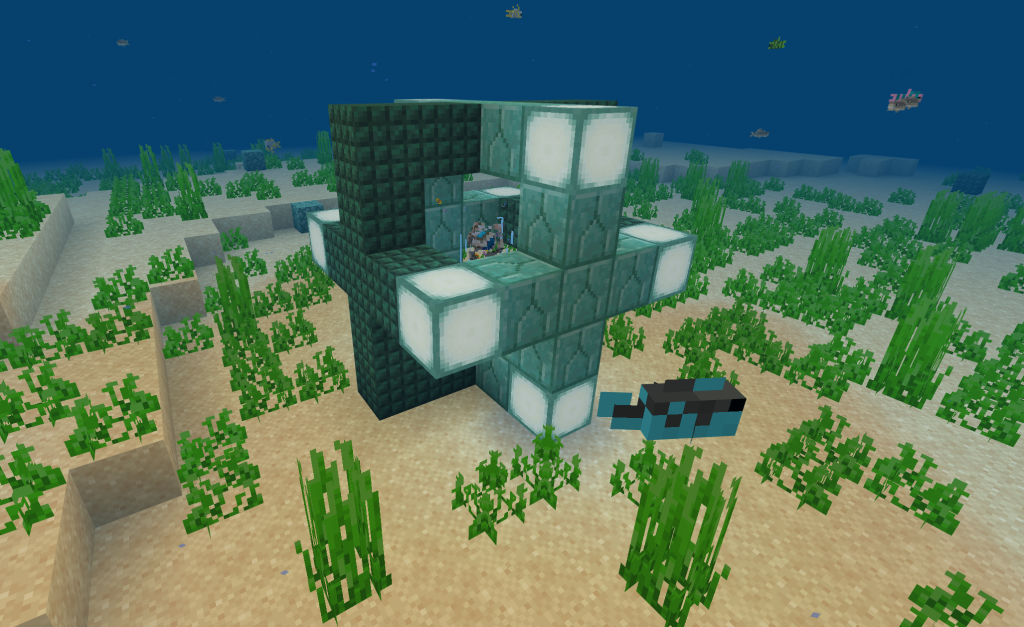
This conduit is considered fully powered with a range of 96 blocks.
To ensure that your conduit has reached maximum power after adding the 42nd block, all you have to do is check the conduit itself. Once it has a red line will be drawn down its center, as illustrated below.
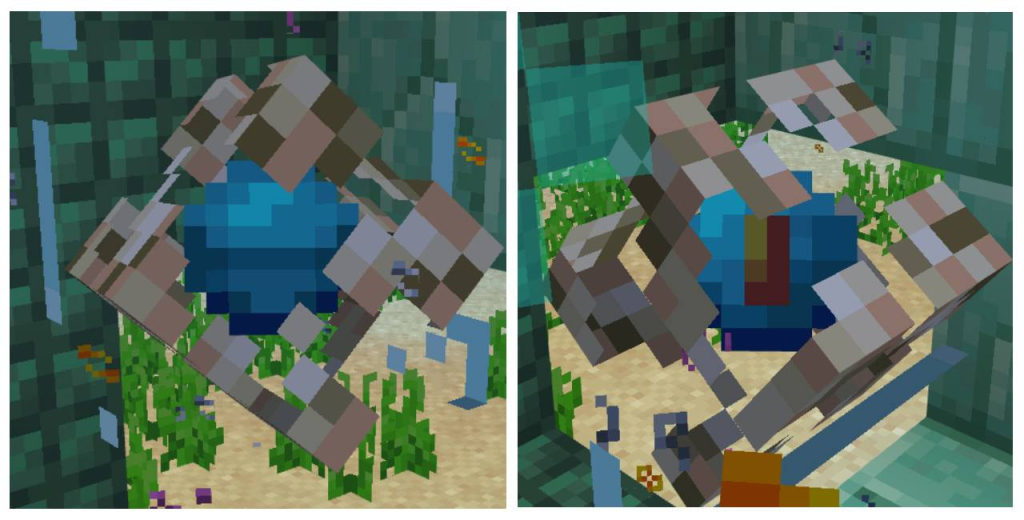
After the conduit has the red line down its center, it is fully powered and should provide you with conduit power up to 96 blocks away. You’re now ready to explore the waters you’ve placed it in! Don’t be afraid to move it around as you clear out underwater areas, as every item used to build it can easily be broken by pickaxe.
Conduit Maximum Range Error
If you find that your conduit has changed to the fully powered appearance but isn’t working the full 96 blocks, make sure to check your simulation distance! Your simulation distance must be set at 6 chunks or higher; otherwise, you will only be able to use your conduit powers at a range of about 70-75 blocks at most.
You can find the simulation distance by going to settings while in your world and clicking on the “Game” tab. It can be found right below the world seed.
